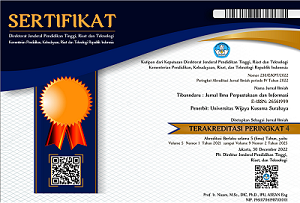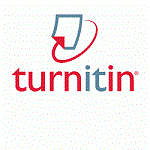Online Submissions
Already have a Username/Password for Tibanndaru : Jurnal Ilmu Perpustakaan dan Informasi?
Go to Login
Need a Username/Password?
Go to Registration
Registration and login are required to submit items online and to check the status of current submissions.
Author Guidelines
Tibanndaru Journal: Library and Information Science only accepts manuscripts written in Indonesian and English. Please take a moment to read our guidelines below as part of the shipping process to ensure your paper complies with journal requirements.
The author must first download the journal template HERE because it can help follow the journal layout. The manuscript has never been published before or has been considered in another journal. Script file in Microsoft Word (.doc) format. Regarding bibliography/references, the journal applies the APA Style. Therefore, we hope the authors pay attention to it. In addition, it is recommended for writers to use reference manager tools such as Mendeley or Zotero
1) General Manuscript Guidelines
Manuscripts are scientific papers that have never been published in other publications, both print and online. Manuscripts do not contain elements of plagiarism. The editorial board will immediately reject the text that indicates plagiarism. Submission and publication process is free, without additional fees. Manuscripts that have been written under the Tibanndaru guidelines: Library and Information Science (in MS Word format, use this article template) must be submitted via the Online Submission System using the Open Journal System (OJS). Manuscripts that do not comply with the journal template will be returned to the author prior to the review process. Manuscripts can be written in Indonesian or English with academic standard languages. See the journal template.
2) Guidelines for Text of Body Texts
Title of the manuscript: The title must be informative and written briefly and clearly. It cannot be a variety of interpretations. It must be right with the problem to be discussed. Technical writing can be seen in the journal template
Introduction: Introduction must contain (brief and sequential) general background and literature review (state of the art) as the basis of new research questions, statements from new scientific articles, major research problems, and hypotheses. At the end of the introduction, the purpose of writing the article must be stated. In the format of scientific articles, it is not permissible to write references as in the research report. They must be represented in the literature review to show new brands of scientific articles.
Literary review: contains systematic descriptions of previous studies that are relevant to the study. This section explains the strengths and limitations of previous research which can be material for the argument that current work is done to improve or develop previous research. This section also contains basic theories, basic concepts, and principles needed to solve problems related to research. The literature review can be in the form of qualitative descriptions, mathematical models, concepts, or tools related to research. All sources cited in the study must be clearly written in the reference list.
Research Methods: This method is applied to solve problems, including analytical methods. The method used in problem-solving
Submission Preparation Checklist
As part of the submission process, authors are required to check off their submission's compliance with all of the following items, and submissions may be returned to authors that do not adhere to these guidelines.
- The submission has not been previously published, nor is it before another journal for consideration (or an explanation has been provided in Comments to the Editor).
- The submission file is in OpenOffice, Microsoft Word, RTF, or WordPerfect document file format.
- Where available, URLs for the references have been provided.
- The text is single-spaced; uses a 12-point font; employs italics, rather than underlining (except with URL addresses); and all illustrations, figures, and tables are placed within the text at the appropriate points, rather than at the end.
- The text adheres to the stylistic and bibliographic requirements outlined in the Author Guidelines, which is found in About the Journal.
- If submitting to a peer-reviewed section of the journal, the instructions in Ensuring a Blind Review have been followed.
Copyright Notice
Once an article was published in the journal, the author(s) are:
- granted to the journal right licensed under Creative Commons License Attribution that allows others to share the work with an acknowledgment of the work's authorship.
- permitted to publish their work online in third parties as it can lead wider dissemination of the work.
- continue to be the copyright owner and allow the journal to publish the article with the CC BY-NC-SA license
- receiving a DOI (Digital Object Identifier) of the work.
Privacy Statement
The names and email addresses entered in this journal site will be used exclusively for the stated purposes of this journal and will not be made available for any other purpose or to any other party.


.png)







 Â Â Â
  Â